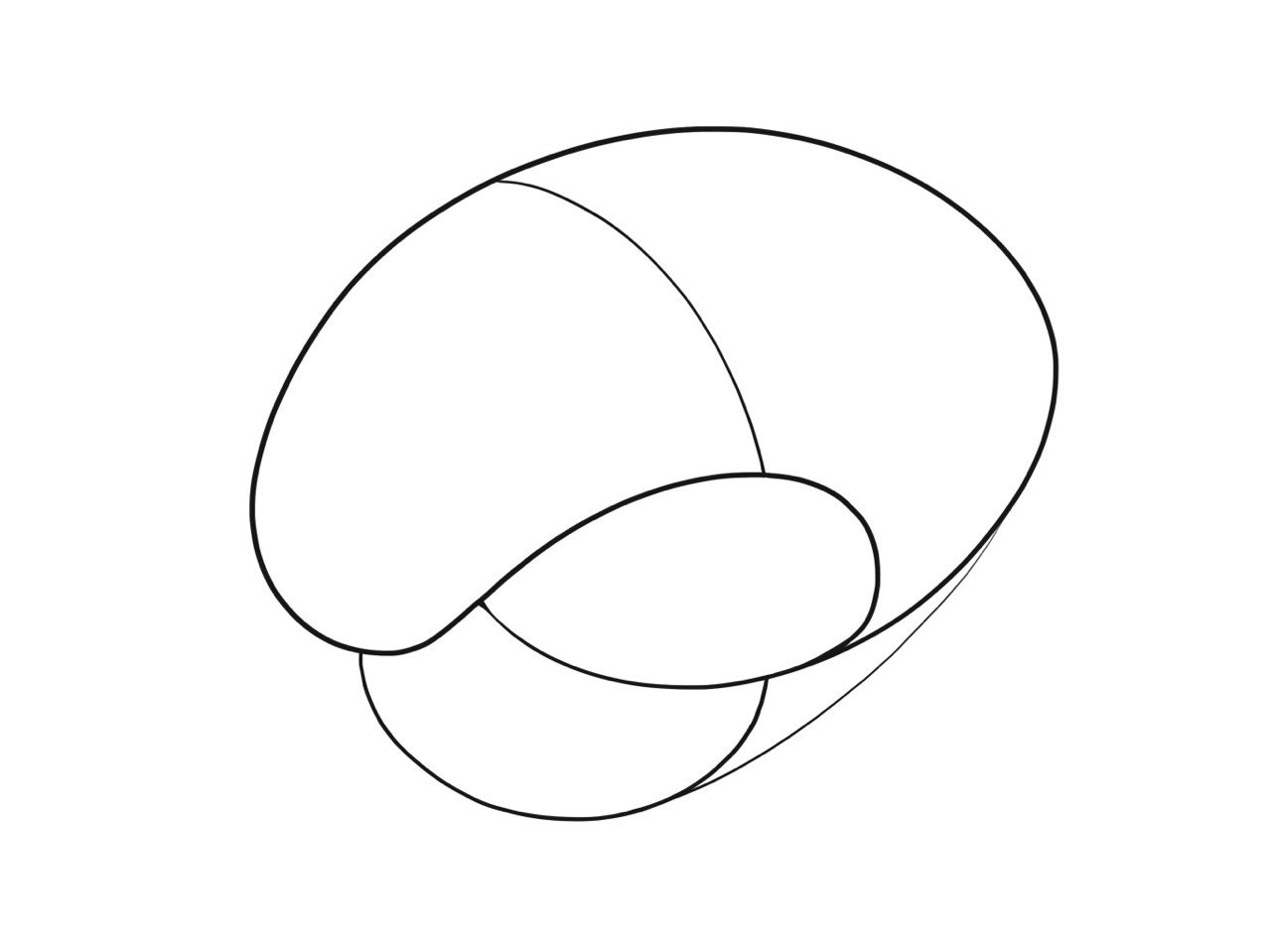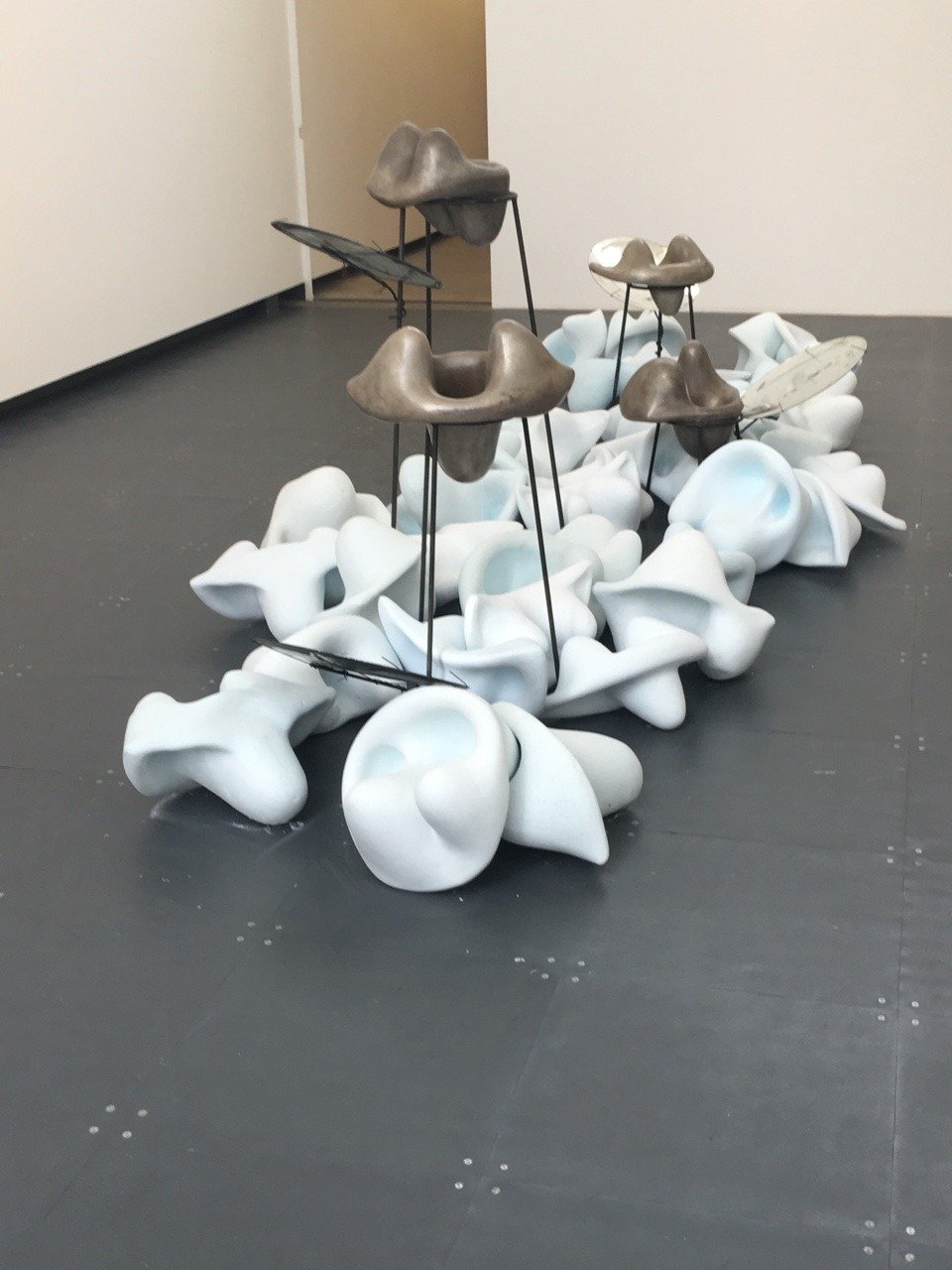Rafael Vogt Maia Rosa entrevista João Paulo Cavalcanti
Rafael Vogt Maia Rosa - Como você se apresenta?
João Paulo Cavalcanti - Normalmente me apresento como um artista-futurista. Primeiro porque minha formação profissional primeira vem desse campo: estudos de futuros. Embora a arte tenha me enredado desde que nasci, a profissão artista veio depois. Olhar para isso como minha identidade profissional é, relativamente, recente. E em segundo lugar, me apresento como artista-futurista porque gosto do conceito de artista-etc do Ricardo Basbaum. Penso que muitos artistas interessantes e relevantes atualmente têm um sufixo que representa outra competência que adiciona à sua prática e produção artística - seja um interesse pessoal sério ou a carreira de uma “vida passada”, por exemplo.
No meu caso, adiciono o termo futurista porque, para melhor ou pior, é de onde eu venho. Sou pesquisador de cultura e consumo desde meus 19 anos. Foi esse trabalho que me permitiu decodificar o mundo. Viajar por diferentes países e desenvolver minhas antenas. Mas eu, em particular, gosto também do termo futurista e do campo de pesquisa chamado estudos de futuros que é um campo extremamente recente na academia. É uma espécie de história ao contrário. Ou a história daquilo que ainda não aconteceu. Como na ficção científica. Acho que o mundo precisa de mais futurólogos e futuristas. Porque o futurólogo é aquele que estuda e história do futuro, ele distribui novos conceitos, visões ou mesmo artefatos culturais inovadores dentro do sistema. E o sistema, mais do que nunca, precisa de novos saberes e novas abordagens. Precisamos recodificar o sistema. Nesse sentido, sou progressista e um programador da cultura.
RVMR - Como surgiu sua abordagem para a arte e o início de sua produção artística?
JP Cavalcanti - Desenho desde os 3 anos de idade e passei a ler e escrever poesia por volta dos 13 anos. Então, sou artista antes de ser empreendedor ou futurista. A arte sempre foi uma necessidade para mim. Como o mundo do empreendedorismo ocupou muito do meu tempo e interesse, além da arte, só comecei a focar mais na produção contínua depois dos 35 anos. Foi quando percebi que não conseguiria sobreviver se não fizesse isso. Estar criando é uma das únicas coisas que dá sentido integral à minha vida. Criando o que “não precisa ser criado” que, em última análise, é uma das definições possíveis do que é arte.
Agora, falando de gênese, foi em 2008 que fiz minha primeira peça de maior empenho. Chamava-se iManifesto e envolveu a leitura de um texto que alertava sobre o nascimento de uma nova forma de poesia coletiva, evidenciada pelo iPhone - foi um ano depois do iPhone ser apresentado ao mundo. Rodei casas de concerto e teatros em Porto Alegre por um período de 6 meses lendo esse texto nos palcos. Foi uma coisa meio instintiva e uma brincadeira com essa coisa do manifesto artístico. Este texto é uma ode e reflexão para um mundo pós-iPhone onde os manifestos de arte - importantes para definir a prática ao longo do século 20 - não faziam mais sentido algum. Falava de algo escondido, não manifestado, que estava, e ainda está, pairando sobre a cultura. De alguma forma ou de outra eu sabia que algo havia mudado ali e queria apenas expressar minhas percepções sobre isso. Foi uma espécie de performance usando a ideia de manifesto artístico, só que ao contrário. Adoro as inversões.
RVMR - Mas por que este elemento iPhone foi tão importante naquele momento para você?
JP Cavalcanti - O elemento iPhone foi importante para mim porque, alguns anos antes, tive a oportunidade de trabalhar como futurista e pesquisador com minha primeira empresa de pesquisa, a BOX1824 junto com a Nokia, lembra? Previmos o nascimento dos smartphones antes do iPhone existir. Isso foi em 2004 e o iPhone foi introduzido ao mundo em 2007. Além disso, o iPhone se tornou o produto mais transformador e lucrativo na história do capitalismo. Tudo passou a ter um “i” como sufixo - iHome, iMovie, iGlasses, iPlace, iLife, etc. Mesmo hoje esse “i” adorna os caminhos da humanidade. Para mim, o “i” como sufixo é um poema coletivo que tenta redefinir a existência dos objetos nesse espaço virtual (ou transdimensional como chamo hoje). O mundo precisava renascer neste novo Campo e o “i” foi uma espécie de tentativa ingênua, mas potente que adorna o artefato capitalístico mais bem sucedido de todos os tempos: o iPhone.
RVMR - Como essa produção se articulou com seu trabalho envolvendo IA?
JP Cavalcanti - Isso foi bem depois. Uma das empresas das quais fiz parte, em 2016, foi a Kunumi, hoje um dos principais laboratórios de Inteligência Artificial e Machine Learning na América Latina. Na época tive a oportunidade de trabalhar com um coletivo e a FLAG.cx em um projeto para “recriar a mente” do falecido rapper Sabotage. Esse experimento ocorreu dentro de uma galeria de arte (Zipper) e culminou em uma faixa chamada Neural que você pode ouvir no Spotify e é assinada, mesmo postumamente, pelo rapper Sabotage. Isso nunca tinha sido feito antes e é um destes momentos onde a arte e a tecnologia criam um marco cultural. Na verdade, Neural foi o primeiro rap gerado por inteligência artificial generativa no mundo e o primeiro a dar a chance de um artista morto assinar uma criação postumamente. São muitos marcos e todos eles co-criados e co-dirigidos por este coletivo. Esse não é uma trabalho meu, mas um trabalho que foi mediado e também possibilitado por mim.
Ele lida com muitas questões sobre autoria individual e coletiva, contemporânea e póstuma. É um trabalho incrível e amplamente provocativo. Me orgulho de ter estado dentro dele e ter deixado ele passar por mim.
RVMR - Quais são as semelhanças e maiores diferenças que você vê entre o universo NFT, sua estrutura financeira, e o universo da cultura?
JP Cavalcanti - Nossa, essa é uma pergunta complexa. Mas acho que a melhor resposta para isso é que hoje - e muito mais amanhã - o NFT é a própria cultura. Olha, vou dizer algo que eu poderia explicar por horas a fio, mas vou apenas deixar aqui como uma frase para ressoar com você. Em outro dia podemos marcar uma entrevista ou um bate-papo apenas para falar sobre isso. Mas aqui está a frase:
Criptomoedas são a economia descentralizada. NFTs são a cultura descentralizada.
RVMR - O que é “normcore”? Como ele se encaixa na cultura contemporânea?
JP Cavalcanti - Normcore foi, junto com a palavra Vape, a palavra do ano em 2014 de acordo com a famosa eleição anual promovida pelo Dicionário Oxford. Com a diferença de que normcore foi uma palavra nascida de um relatório de tendência que construímos e apresentamos junto com o coletivo de arte de Nova York, K-Hole. O relatório-arte que introduziu este termo pela primeira vez, junto com vários outros dados e insights importantes, foi apresentado em 2013 na Serpentine Gallery em Londres sob o nome de “Youth Mode: a report on Freedom” e curadoria de Hans Ulrich Obrist. O relatório pode ser baixado gratuitamente em .pdf na internet até hoje.
Normcore é um termo que inventamos no relatório para se referir à “cultificação” da normalidade que estava começando a nascer quase como um movimento de resistência juvenil incompreensível naquela época. Normcore é um termo que descreve uma tendência de moda e cultura caracterizada pela adoção deliberada de um estilo comum e não distintivo, enfatizando a normalidade e o conforto em detrimento da extravagância ou do esforço para se destacar. O normcore busca uma autenticidade que transcende a necessidade de ostentação, valorizando roupas e comportamentos que são universalmente reconhecíveis e acessíveis.
RVMR - Você criou obras exclusivamente para o universo NFT? Poderia falar sobre elas?
JP Cavalcanti - Atualmente estou trabalhando na minha primeira coleção NFT chamada Lexus Novus, que consiste em 64 biogramas que são desenhos ou assinaturas esculturais. Estou feliz por poder canalizar esses desenhos tridimensionais para minha produção. Sinto que é uma nova estrada de mão única que lida principalmente com a ideia de desenho tridimensional e realidade virtual. Estou empolgado com os tempos em que estamos vivendo e tudo o que está se formando à nossa frente. É por isso que acho crucial ser mais artista-empreendedor, porque o papel da arte sempre foi fazer perguntas e isso sempre será um de seus principais papéis. Mas chegou o momento em que a arte não apenas faz perguntas, mas também começa a fornecer respostas.












